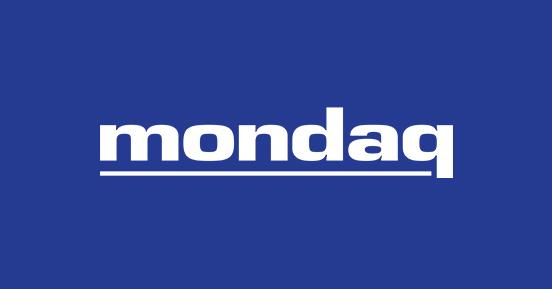To print this article, all you need is to be registered or login on Mondaq.com.
Ireland has become an attractive destination for foreign direct
investment (“FDI”), as well as a hotbed for transactions
in the technology sector. A view from our Mergers and Acquisitions
team.
In this article we look at some of the reasons why Ireland has
become such an attractive destination for FDI, as well as a hotbed
for transactions in the technology sector. We also consider the
implications this has on the transactional risk market in Ireland
and what clients and advisors should keep in mind when considering
a placement.
Ireland as a key destination for investment
Pro EU
Ireland has retained instant access to the European marketplace,
as well as the Common Travel Area. This provides a competitive
advantage as companies look to access new markets. Ireland is also
now the only native English-speaking EU member state.
Competitive tax environment
Ireland’s low corporation tax rate of 12.5%* has been a
great incentive for FDI and supports its strong reputation as an
excellent place to do business. In comparison to other European
countries like Portugal, Germany and France, Ireland offers a much
lower rate.
*Subject to the OECD framework
Ireland’s low
corporation tax rate of 12.5%* has been a great incentive for
FDI…
Dynamic Research and Development (R&D)
sector
Ireland has a thriving R&D sector, which is founded upon
strong collaboration between industry, academia and regulatory
authorities. The government also offers a tax credit of 25%, which
applies to the full amount of qualifying R&D expenditure. This
credit not only encourages FDI into the local economy but is a key
tool in allowing homegrown companies to continue to grow and
innovate.
Skilled talent pool
Ireland has a young (the youngest in Europe) and highly educated
workforce,1 providing investors with a rich pool of
talent, in addition to being able to draw from a large European
workforce.
Legal and regulatory framework
Ireland’s legal system (based on common law principles)
together with its robust regulatory framework are widely recognised
as creating an attractive and stable landscape in which companies
can operate their businesses from.
There has been increased
inbound investment from the US, likely fuelled by the
attractiveness of the Irish market following Brexit.
Transactional risk market trends
Ireland’s low
corporation tax rate of 12.5%* has been a great incentive for
FDI…
- US in-bound investment – Over recent
years, there has been increased inbound investment from the US,
likely fuelled by the attractiveness of the Irish market following
Brexit.2 Where a buyer/insured and/or the governing law
of the transaction documents are US, it can make the Warranty and
Indemnity (W&I) process more complex. This is because whilst
the product is fundamentally the same in the UK and Europe and the
US, premiums, underwriting processes and policy mechanics are very
different. Seeking a broker with the requisite knowledge of this is
key to a successful placement. - Technology products – The W&I
insurance market is constantly evolving and one of the ways in
which some insurers have tried to differentiate themselves is by
offering products/enhancements to cover specific Intellectual
Property (IP) related risks. These products/enhancements aim to
dovetail with the existing warranty package and specific
indemnities contained in the transaction documents and can plug any
gaps in coverage by providing coverage for either identified risks
or unknown/disclosed risks where a seller has failed to offer
adequate warranty protections. Coverage can be tailored further
through the insurer conducting specific diligence on a target’s
portfolio of IP. This offering has coincided with the increased
number of transactions in the Technology, Media and Telecom sector
in Ireland, therefore providing clients with an additional form of
recourse for IP risks.3
Smaller deals valued below
EUR 10m have traditionally been considered “too small”
for W&I insurance…
- Small and medium sized enterprises (SME) and synthetic
warranties – Smaller deals valued below EUR 10m have
traditionally been considered “too small” for W&I
insurance as they are not cost effective for an insurer to commit
resources to. There is, however, an increasing interest in this
lower end of the market and in 2022 and H1 2023 insurers have been
looking at ways to access this market and to provide solutions for
SME transactions. Three insurers have recently launched products
designed to target these smaller deals by using technology to
streamline the process, synthetic warranties and standardised
policy wording to underwrite more efficiently and at a lower cost.
With current trends in the M&A market and the inclination
toward smaller deals, particularly in the Irish market, these
products are likely to generate increasing interest. - Internal due diligence – In our
experience, internal due diligence is more commonplace on Irish
transactions than in the UK. This is largely due to a greater
weighting of corporates over private equity undertaking
transactions than in the UK and the highly technical sectors in
which Irish companies often operate. Where internal due diligence
is commissioned, insurers typically want to see four conditions
fulfilled:
- the due diligence is carried out by persons with the requisite
subject matter expertise/credentials; - the findings are memorialised in a report or memorandum, akin
to what you would expect from a third-party report; - the report focuses on the historic operations of the target
entity, rather than forward looking integration; and - the scope reflects that of a third-party report.
- the due diligence is carried out by persons with the requisite
- Insurance premium tax (IPT) – Ireland
has a modest rate of IPT for non-life insurance policies, currently
at 5% (made up of a 3% Government Levy and a 2% Insurance
Compensation Fund Levy) in addition to a €1.00 stamping fee.
Whilst there are various European countries that offer IPT rates of
less than 1% (for example Czechia, Latvia, Norway and Poland), when
compared to the upper end of IPT rates which can be upwards of 19%
of the premium (for example Finland, Germany, Italy and The
Netherlands), Ireland’s IPT rate is widely perceived as
favourably low.4
Footnotes
1. Why Ireland’s attractiveness to US FDI is a
cause for celebration this 4th of July
3. Digital Transformation Driving Change in the
Profile of Irish Tech Deals
4. Stamp Duty insurance levies
The content of this article is intended to provide a general
guide to the subject matter. Specialist advice should be sought
about your specific circumstances.
POPULAR ARTICLES ON: Government, Public Sector from Ireland
K&L Gates
On 13 July 2023, the European Court of Justice (ECJ) set aside the General Court’s judgment of 2020 annulling the European Commission’s (Commission) 2016 prohibition decision concerning…
Withers LLP
The end of the supremacy of EU law in the UK came about on 29 June 2023 when the Retained EU Law (Revocation and Reform) Bill received Royal Assent.
Macfarlanes
In its final form, the Act did not create the “bonfire” of EU-derived legislation that was originally envisaged. Nonetheless, this remains an important piece of legislation…
Chadbourne & Parke LLP
It has been widely accepted that in recent years the Ukrainian judicial system has failed to develop practices in line with those that would be considered standard in many Western jurisdictions. The Ukrainian judicial system’s reputation remains poor and, in general, confidence in the ability of Ukrainian courts to provide a fair and cost effective process for the resolution of disputes is low. While the Government has made some efforts to remove a number of the more negative aspects of th



